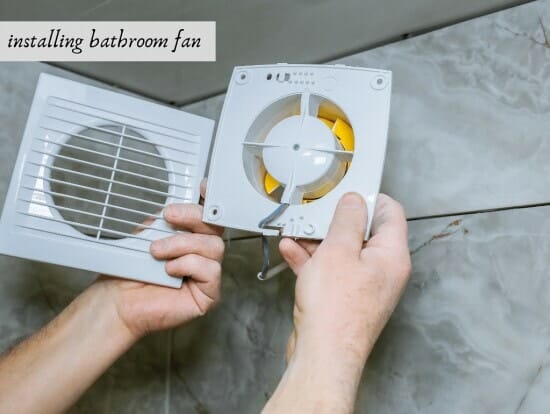Have you been enduring the incessant drone of a loud bathroom fan that drowns out your thoughts and shatters your sanctuary of tranquility? Fear not, weary homeowner. In this comprehensive guide, we will delve into the depths of bathroom fan repair, empowering you with the knowledge and techniques to restore the soothing serenity of your bathroom.

Image: onlysilent.com
Anatomy of a Bathroom Fan
Understanding the anatomy of your bathroom fan is crucial for effective troubleshooting. Typically, a bathroom fan consists of the following components:
- Motor: The heart of the fan, responsible for propelling the blades.
- Blades: Thin, angled surfaces that catch the air and generate airflow.
- Housing: Encloses the motor and blades, directing the airflow.
- Duct: Connects the fan to the exterior of the house, allowing air to escape.
Diagnosing the Root of the Noise
Before embarking on repairs, it’s essential to identify the source of the noise. Here are common causes and troubleshooting tips:
- Unbalanced Blades: Loose or damaged blades can wobble during rotation, causing a rattling sound. Check for loose screws or replace worn blades.
- Damaged Motor Bearings: Worn or failing bearings can create a grinding or humming noise. Contact a qualified electrician for motor replacement.
- Loose Housing: A vibrating or rattling housing indicates loose screws or a broken mounting plate. Secure the housing firmly.
- Clogged Duct: Obstructions in the duct, such as dust or debris, can restrict airflow and create a whining or buzzing sound. Clean or replace the duct as needed.
DIY Repairs: A Step-by-Step Guide
For minor issues, you can attempt DIY repairs with the following steps:
- Safety First: Turn off the power at the circuit breaker before handling electrical components.
- Inspect the Blades: Remove the fan housing to check for loose or damaged blades. Tighten any screws or replace worn blades.
- Lubricate the Motor: Apply a few drops of light machine oil to the motor bearings. Avoid over-lubricating, as excess oil can attract dirt.
- Check the Housing: Ensure that the housing is securely attached to the wall or ceiling. Tighten any loose screws or install a new mounting plate if necessary.
- Inspect the Duct: Remove the duct cover and check for any obstructions or blockages. Clean out any debris or replace the duct if damaged.
- Reassemble and Test: Reattach the fan housing and turn the power back on. Test the fan to ensure it operates quietly and efficiently.

Image: hvac-boss.com
When to Call a Professional
For complex repairs, such as motor replacement or electrical wiring issues, it’s advisable to seek professional assistance. A qualified electrician or HVAC technician can provide expert diagnosis and repairs to restore your bathroom fan to its former glory.
Additional Tips for Optimal Performance
- Choose a Quality Fan: Opt for bathroom fans with higher CFM (cubic feet per minute) ratings for more efficient air removal.
- Regular Maintenance: Clean the fan blades and housing every few months to prevent dust buildup and ensure optimal airflow.
- Insulate the Duct: Installing insulation around the duct can reduce noise from the fan motor and airflow.
- Consider a Quiet Fan: If noise reduction is a priority, invest in a bathroom fan specifically designed for quieter operation.
How To Fix A Loud Bathroom Fan
Conclusion
With the knowledge and techniques provided in this comprehensive guide, you are now well-equipped to silence the noisy woes of your bathroom fan. Remember, regular maintenance and prompt repairs not only restore the tranquility of your bathroom but also ensure proper ventilation, preventing moisture buildup and promoting a healthy indoor environment. And should the need arise for professional assistance, don’t hesitate to contact a qualified electrician or HVAC technician for expert advice and seamless repairs. May your bathroom fan hum harmoniously, enhancing the serenity of your humble abode.